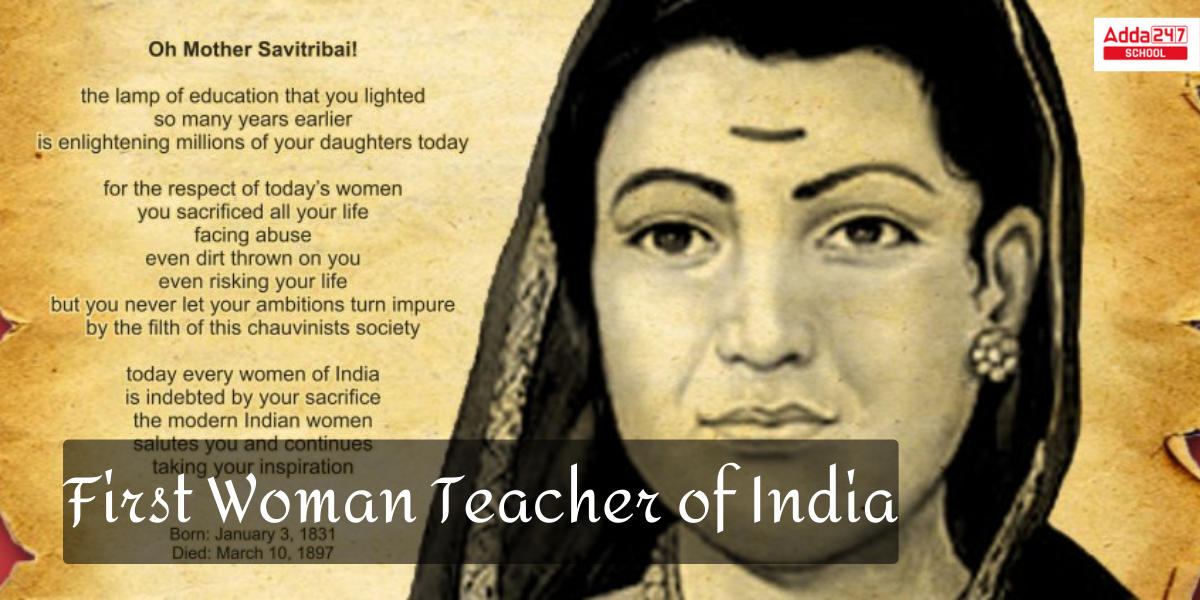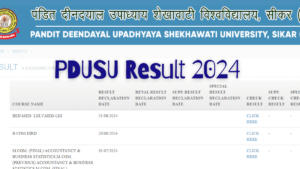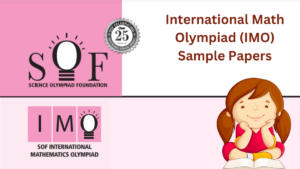Table of Contents
First Women Teacher in India: Savitribai Phule is widely regarded as contemporary India’s First Women Teacher of India. Savitribai Phule was an ardent supporter of female education, equality of opportunity, and justice who used her rebellious beliefs to challenge the hierarchy of caste. She also worked to tear down the elite-controlled educational system. She was significant in strengthening women’s rights in India, working alongside her husband, Jyotiba Phule, in Maharashtra. This year on January 3rd we commemorate the 192nd birth anniversary of this groundbreaking leader or First Women Teacher in India.
First Women Teacher in India
Who is the first female teacher in India? Savitribai Phule was a pioneering First Women Teacher of India, as well as an Indian social reformer, educator, and poet from Maharashtra. The contributions and individuality in the sphere of education and emancipation of Savitribai Phule ji must be remembered in the future. She is regarded as the founder of India’s feminist revolution.
In 1848, Savitribai and Jyotiba built one of the early modern Indian girls’ schools in Pune, Bhidewada. By the end of 1851, the Phules had established three distinct schools. Her trip had not been easy. Upper-caste guys allegedly stoned her and threw cow poo at her on her route to school. But it never dampened her spirit. Savitribai wore two saris to school and simply changed her filthy clothes once within the school grounds.
First Women Teacher of India
Savitribai was a Dalit woman from the Mali group. At the tender age of ten, she married 12-year-old Jyotirao Phule, himself a social reformer who thought that women needed to be educated. He started homeschooling Savitribai. Savitribai and Jyotirao’s efforts to remove social constraints paved the way for women’s independence by establishing women’s schools at a period when the idea of female education was foreign to society. Savitribai received admission to a teacher training facility in Pune by Jyotirao, and the pair went on to establish the first-ever school for girls in Bhidewada, of which Savitribai was appointed headmistress, in 1848.
First lady teacher in India 1848: Early Life
Savitribai was born on January 3, 1831, in Naigaon village, Maharashtra’s Satara district, to Khandoji Nevse and Lakshmi. She went on to become an educator, an adversary to caste norms and restrictions, and a writer.
- Savitribai Phule was the youngest daughter of Mali community members Lakshmi and Khandoji Nevase Patil. She has three brothers and sisters.
- Savitribai married Jyotirao Phule when she was 9 or 10 (he was 13). Despite the fact that they didn’t have children of their own to raise. They are claimed to have adopted Yashawantrao, the son of a Brahmin widow.
- Savitribai, known as the country’s first outstanding feminist, learned to read and write and soon began teaching females in Maharwada, Pune, with Sagunabai, her husband Jyotirao’s tutor.
First Women Teacher in India as Author & Poet and Other Revolutionary work
Became the plight of the Shudras.
Looking at their condition,
The heart screams its protest,
The mind blanks out,
Struggling to find a way out.
Education is the path,
For the Shudras to walk,
For education grants humanity
freeing one from an animal-like existence
— Savitribai Phule
- Savitribai Phule also wrote poetry and prose. She published Kavya Phule in 1854 and Bavan Kashi Subodh Ratnakar in 1892, as well as a poem titled “Go, Get Education” in which she encouraged oppressed people to free themselves via education.
- She founded the Mahila Seva Mandal to create awareness about women’s rights issues. She also advocated for a gathering space for women that was free of any form of caste prejudice or difference. All of the women that came were supposed to sit on the same mat as a symbol of this.
- She also advocated for widow remarriage and campaigned against child marriage. Savitribai and Jyotirao were staunch opponents of Sati Pratha, and they established a place of shelter for widows and orphaned children.
- She founded the Home for the Prevention of Infanticide, a women’s refuge where Brahmin widows could securely birth their children and leave them to be adopted if they so wished.
- Savitribai told her husband Jyotirao a story of a youngster who was ready to be killed by his fellow villagers for having contact with a woman of lower caste until Savitribai intervened. “I learned about their deadly plan,” she wrote. She continues, “I raced to the scene and frightened them away, citing the serious implications of murdering the lovers under British law. They altered their minds after hearing what I had to say.”
Legacy of First Women Teacher in India
Savitribai Phule, an Indian social activist, educator, and poet from Maharashtra, died of the bubonic plague on March 10, 1897. Let us explore the legacy of our First Women Teacher in India.
- On March 10, 1998, India Post issued a stamp honoring Phule.
- In addition to B. R. Ambedkar and Annabhau Sathe, Phule is now a symbol for the underprivileged.
- In 1983, the Pune City Corporation erected a memorial to her.
- Savitribai’s birthday, 3 January, is observed as Balika Din (lit. “Girl Child Day”) throughout Maharashtra, particularly in girls’ schools.
- In her honor, the University of Pune has renamed Savitribai Phule Pune University in 2015.
- The search engine Google commemorated the 186th anniversary of Savitribai Phule’s birth with a Google doodle on January 3, 2017.


 PDUSU Result 2024 OUT, Download MEd, BEd...
PDUSU Result 2024 OUT, Download MEd, BEd...
 IMO Sample Papers 2024-25: Get SOF Math ...
IMO Sample Papers 2024-25: Get SOF Math ...
 VNIT Nagpur Cutoff 2024 Out, Download JE...
VNIT Nagpur Cutoff 2024 Out, Download JE...































